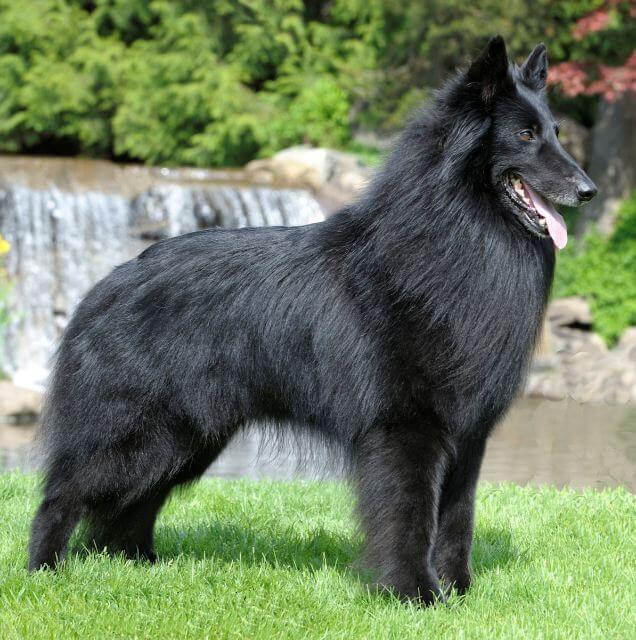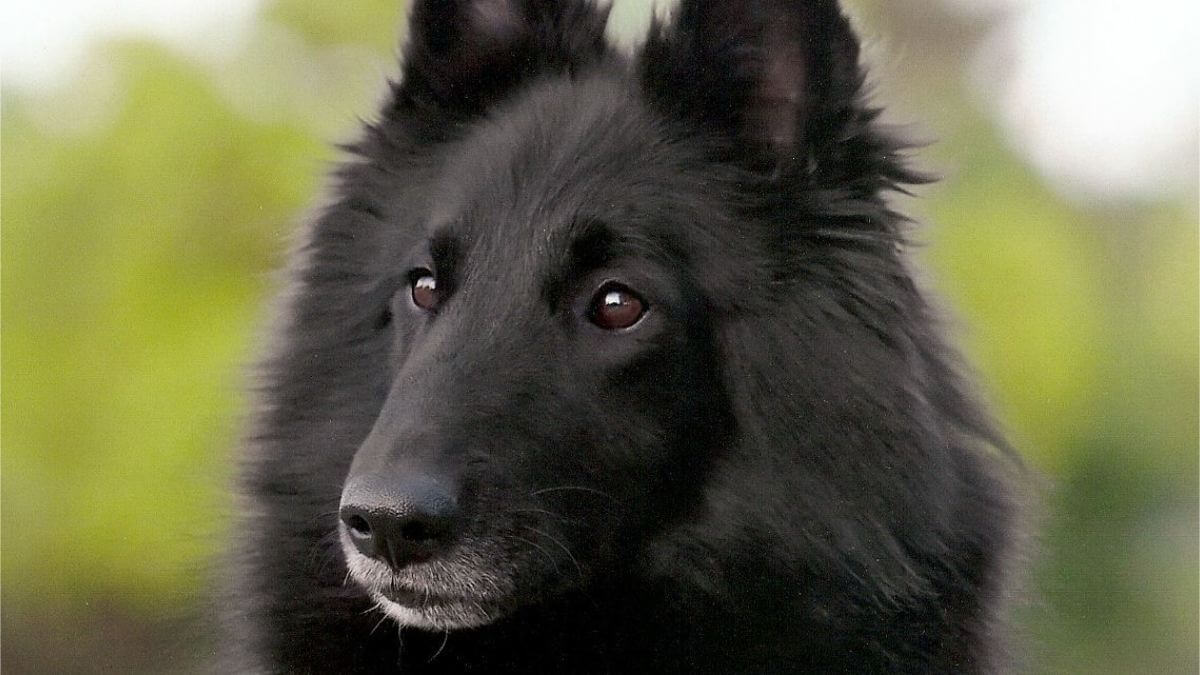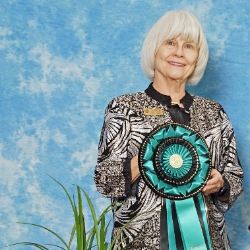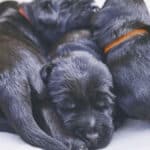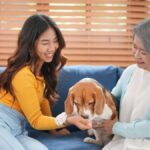Judging the Belgian Sheepdog
The Belgian Sheepdog is one of the four Belgian breeds recognized by the AKC. The others are the Belgian Tervuren, Belgian Malinois, and the more recently recognized Belgian Laekenois. In the rest of the world, the four Belgians are varieties of the same breed: The Belgian Shepherd. The AKC Standards do have some differences but they are essentially the same, so judging each breed will be similar.
The known history of the Belgian Shepherds traces to the 1880s when these dogs, along with German Shepherds, French Shepherds, and Dutch Shepherds, were all called Continental Shepherd dogs. In 1891, the Club du Chein de Berge Belge (Belgian Shepherd Dog Club) was formed for the purpose of determining if there was a true shepherd dog representing only Belgium.
The club discovered in one of the provinces that there was a consistent type of native herding dog: a square, medium-sized dog with well-set triangular ears and dark brown eyes that only differed in the texture, color, and length of hair. In 1892, a Standard was issued and recognized three varieties; dogs with long coats, short coats, and rough coats.
In the US, the varieties were shown together until 1959. In 1959, the AKC gave each variety separate Breed status. The long-haired black took the original name of Belgian Sheepdog. The Tervuren and Malinois formed new breed clubs and drew up their own Breed Standards. The Standard for each of the Belgians is based on Belgium’s single Breed Standard.
JUDGING THE BREED
You will find that Belgian Sheepdogs are mostly owner-handled. This is true of specials as well as the class dogs. This is a breed that is typically free-stacked and doesn’t require excessive posing or hand-stacking. An important thing to remember is that the Belgian Sheepdog is very focused on the handler, so be sure the dog knows you are approaching before you go over the dog. I do this by just saying hi to the dog, or you can just speak to the handler. It is important to approach with confidence, as with so many of the Herding and Working breeds, if the judge is hesitant the dog starts to think something is wrong. Always remember to never accept questionable temperament. Excusing a dog that is having a bad day is okay.
GENERAL APPEARANCE
The Belgian Sheepdog Standard states in the first lines: “The first impression of the Belgian Sheepdog is that of a well balanced, square dog, elegant in appearance, with an exceedingly proud carriage of the head and neck. He is a strong, agile, well muscled animal, alert and full of life.”
When first stepping into the ring, look at the line-up of dogs. They should appear square, with an outstretched neck that goes smoothly into a level topline. A square body is one of the most important characteristics of the Belgian Sheepdog.
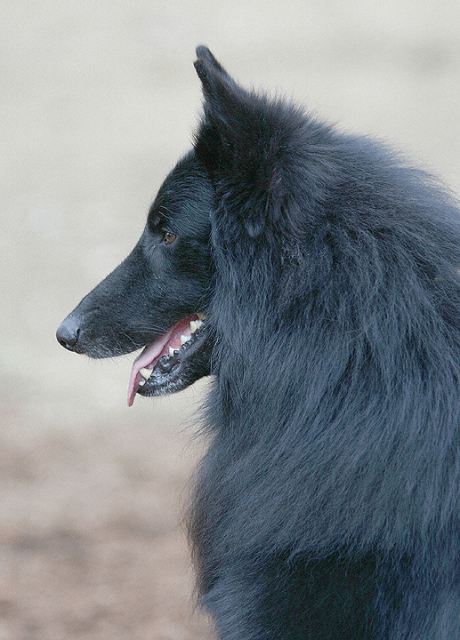
SIZE, PROPORTION, SUBSTANCE
The ideal height is 24 to 26 inches for males and 22 to 24 inches for females. We have a strong desire to keep our dogs and bitches medium in size, so we have height disqualifications. Males under 22-1/2 inches or over 27-1/2 inches, and bitches under 20 inches or over 25-1/2 inches, are to be disqualified. The Belgian Sheepdog Standard allows a greater range on either end for the disqualification than the Belgian Tervuren and Belgian Malinois Standards. So, please check the Standards before judging the Belgian breeds, but do remember that the ideal is the same for all four breeds.
The length, measured from the point of breastbone to the point of rump, should equal the height. Bitches may be slightly longer. When looking at the height, the point of the withers to the chest is equal to the elbow to the ground. The length of hair can hide the proportions, especially on a full-coated male.
So, when judging, be sure to feel for the point of breastbone and the depth of chest. You will see many different proportions; some long in body or short on leg. You will also find dogs that appear shorter in body and longer on leg, which is equally incorrect. So, look for the square, balanced dog. When we say bitches may be longer, we mean “slightly” longer. We still want a bitch that appears square.
When looking at proper proportions, be aware of the surface the dogs are standing on. If they are outside in long grass, it can really distort your impression.
Bone structure should be moderately heavy in proportion to height, neither spindly or leggy nor cumbersome and bulky. This is another area where the Standard gives a clear direction on the fact that we want a strong, medium size, agile breed that can perform many functions.
HEAD
While the Belgian Sheepdog is not a head breed, the head is one of the areas that really defines breed type. Here are a few lines from the Standard that I think are key in describing an ideal head: Head – Clean cut and strong, overall size should be in proportion to the body. Eyes – Brown, preferably dark brown. Medium size, slightly almond shaped, not protruding. Ears – Triangular in shape, stiff, erect. Base of the ear should not come below the center of the eye. Skull & Muzzle – Top (skull) flattened rather than rounded. The width approximately the same, but not wider than the length. The Standard does not mention skull-to-muzzle proportions, but we are looking for the muzzle and the top skull to be of equal length. Parallel planes are also not mentioned in the Standard, but to get the proper expression we are looking for close to parallel planes.
Look for a head that is balanced and a slight wedge. We are not looking for a narrow head as you see with a Collie and not a larger wedge like you would see in the Australian Cattle Dog. What you are looking for is a clean wedge. Look for the balance in the skull and muzzle being equal in length; give the side of the head a quick feel to check for the flatness on the checks. The breed’s high-set triangular ears are necessary to help define the proper type.
In the Standard, we ask for a full complement of strong, white teeth, evenly set, meeting in an even or scissors bite. Be aware that the Belgian Sheepdog Standard does not mention faults when it comes to teeth or bite. We do want you to look at the bites, and the Standard does ask for a full complement of teeth.
When examining the mouth, we want you to check (or have the handler show it, if you’d prefer) the front of the mouth for even or scissors bites. Then, gently lift the side of the lips and check each side for evenly set premolars and molars. We don’t expect you to pry open the mouth as you would in a Rottweiler or Doberman. If there are missing teeth, most likely they will be the small premolars. Since the Standard does not address missing teeth, there is no reason to open the mouth.
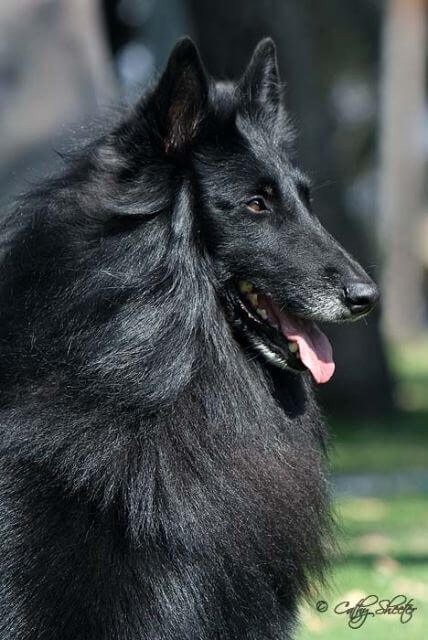
BODY
The Standard is pretty clear on the body and it is not that different than many of the herding dogs. We are looking for a strong, level topline. The lowest point of the brisket should reach to the elbow. With the coat you will not see this, so you must check for it with your hands when judging.
Front feet are round (cat-footed), toes curved close together, well padded. You may find white on the tips of the front toes; it is allowable but a fault. Rear feet are slightly elongated and well padded. White is acceptable on the tips of the hind feet. Please check for flat feet; the well-padded feet are necessary in a herding dog.
COAT
This is a long-coated breed, but the coat should never be so excessive that it would interfere with the working ability or mask the elegant outline. Coat texture is more important than the length and amount. Females seldom carry the same coat as males, but they should always be given equal consideration. I often describe the difference in male and female Belgian Sheepdogs as the difference in a lion and lioness. Do not let the coat get in the way of finding the best dog or bitch.
COLOR
The Belgian Sheepdog is a black dog with allowed white in certain areas described in the Standard. I hear many people saying it is hard to judge a solid black dog. Please look at the outline and remember the Standard. While a solid black dog may not look as flashy in the Group ring, it may be an excellent example of the breed. What makes an excellent Belgian Sheepdog are the characteristics discussed in this article, and we would love your consideration in the Group ring as well as the Breed ring.
MOVEMENT
Proper movement is essential in a Herding breed. The Standard describes it as smooth, free and easy, seemingly never tiring, exhibiting facility of movement rather than a hard-driving action. He tends to single track on a fast gait. The backline should remain firm and level. When you move the dog down and back, you should be looking for single-tracking movement. When viewed from the side, the front legs should extend to about the nose and the rear should be in balance with the front. A square dog can move as cleanly and easily as any breed. The difficulty is the front and rear angles; with a square dog the angles must be proper and in balance. You just don’t have as much body to cover up movement faults.
TEMPERAMENT
The Belgian Sheepdog is not required to be friendly with the judges, but is expected to be approachable. The Standard says, “He should not show fear or shyness.” Please do not award points to a dog that displays poor temperament.
SUMMARY
The Belgian Sheepdog is not a high-profile breed at the AKC shows, but we who are dedicated to the breed care about its future. We would ask all judges who wish to judge our breed to take our Standard as seriously as we the people who own and love this breed do.
The Belgian Sheepdog Club of America’s Judges Education Committee has an online Illustrated Standard on the parent club website. The link is: http://bsca.info/judges-education/judges-responsibility/
